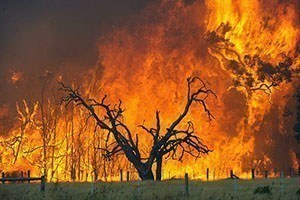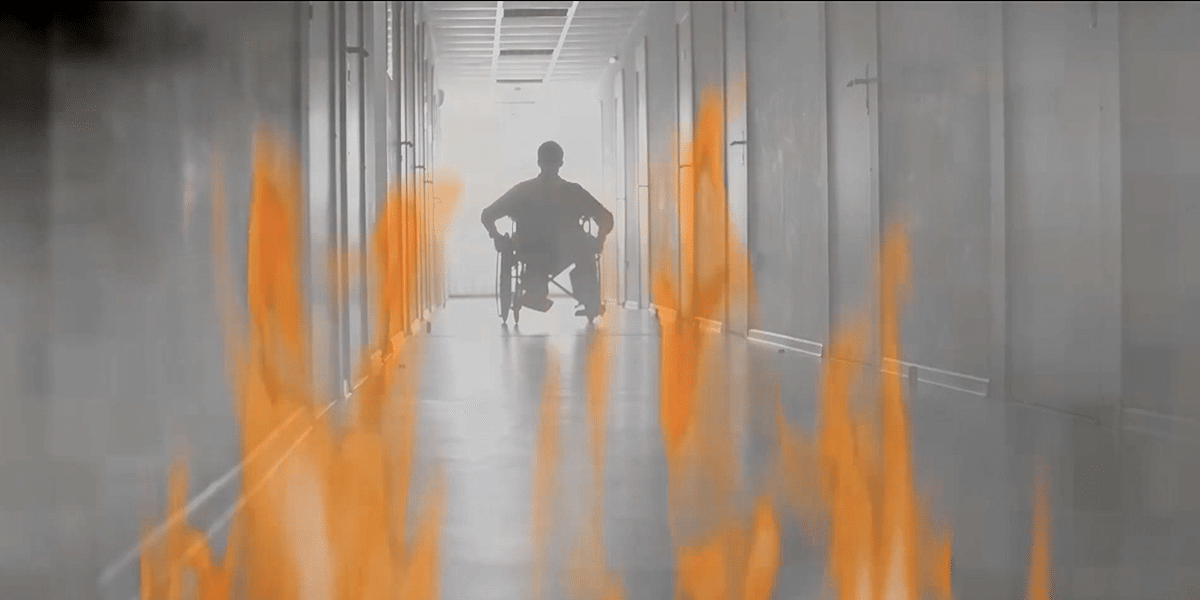
Left Behind in a Blaze: A Teen’s Terrifying Ordeal and His Fight for Safer Schools
The fire alarm in his UK school starts blaring while smoke rises
Everybody knows the harm that bushfires can cause, and in many areas of Australia we live with the threat of bushfires every summer. But when most people think of the injuries bushfires cause to the people who are exposed, they usually imagine that the fire itself is the only risk – when in fact in many cases it’s the bushfire smoke that creates the most health problems.
 Bushfire smoke is made up of water vapour, gases and both small and large particles. It contains carbon monoxide, carbon dioxide and nitrogen oxides, and the levels of these, and the other materials it contains, depend on how much oxygen is available, the temperature of the fire and what the fire is burning.
Bushfire smoke is made up of water vapour, gases and both small and large particles. It contains carbon monoxide, carbon dioxide and nitrogen oxides, and the levels of these, and the other materials it contains, depend on how much oxygen is available, the temperature of the fire and what the fire is burning.
When we are exposed to bushfire smoke we breathe in both the large and small particles, and they both affect different areas of our bodies. Large particles will not usually reach our lungs but they can cause problems in the nose and throat. The bigger worry comes from the smaller, microscopic particles and gases, as they can be breathed deep into our lungs and cause much more serious illnesses.
Exposure to bushfire smoke can cause both short and long term health problems. Some factors that will impact the seriousness of the illness are the length of time you are exposed to the smoke, your age and whether or not you have any pre-existing medical conditions.
A short length of time exposed to smoke inhalation can result in symptoms such as coughing, sore throat, itchy eyes, nausea and a runny nose. In most people the symptoms will usually disappear once the smoke hazard has cleared. But for those who are in a high-risk category such as children, the elderly and those with illnesses such as asthma and heart or lung conditions, the symptoms can be much worse and increase to wheezing, difficulty in breathing and chest tightness.
In the most severe cases, exposure to smoke inhalation can result in chronic medical conditions such as asthma, heart disease and even death.

Performing physical activities in an area where there is smoke in the air will increases the risk of smoke inhalation, as exercise causes fine particles to be breathed into the lungs. Where possible avoid any strenuous outdoor activities until the smoke hazard has completely passed.
Wearing a mask to protect yourself from bushfire smoke can be effective, depending on the quality of the equipment you use. Bandannas and ordinary paper dust masks do not provide adequate protection for your lungs as they fail to filter out the fine particles in bushfire smoke that cause the damage.
Special masks can be purchased that are designed to filter smoke, and these provide good protection when worn correctly. Products such as the Emergency Escape Mask are simple to use and will filter the air you breathe and protect your lungs for up to 60 minutes in an emergency situation.

When you have a fire plan, stay informed and have emergency equipment (such as fire masks) on hand, you give yourself the best chance of avoiding the serious health problems that smoke inhalation can cause.

The fire alarm in his UK school starts blaring while smoke rises

Challenging the Status Quo: Building Classifications and Fire Safety in

Spanish philosopher George Santayana famously said, “Those who cannot remember